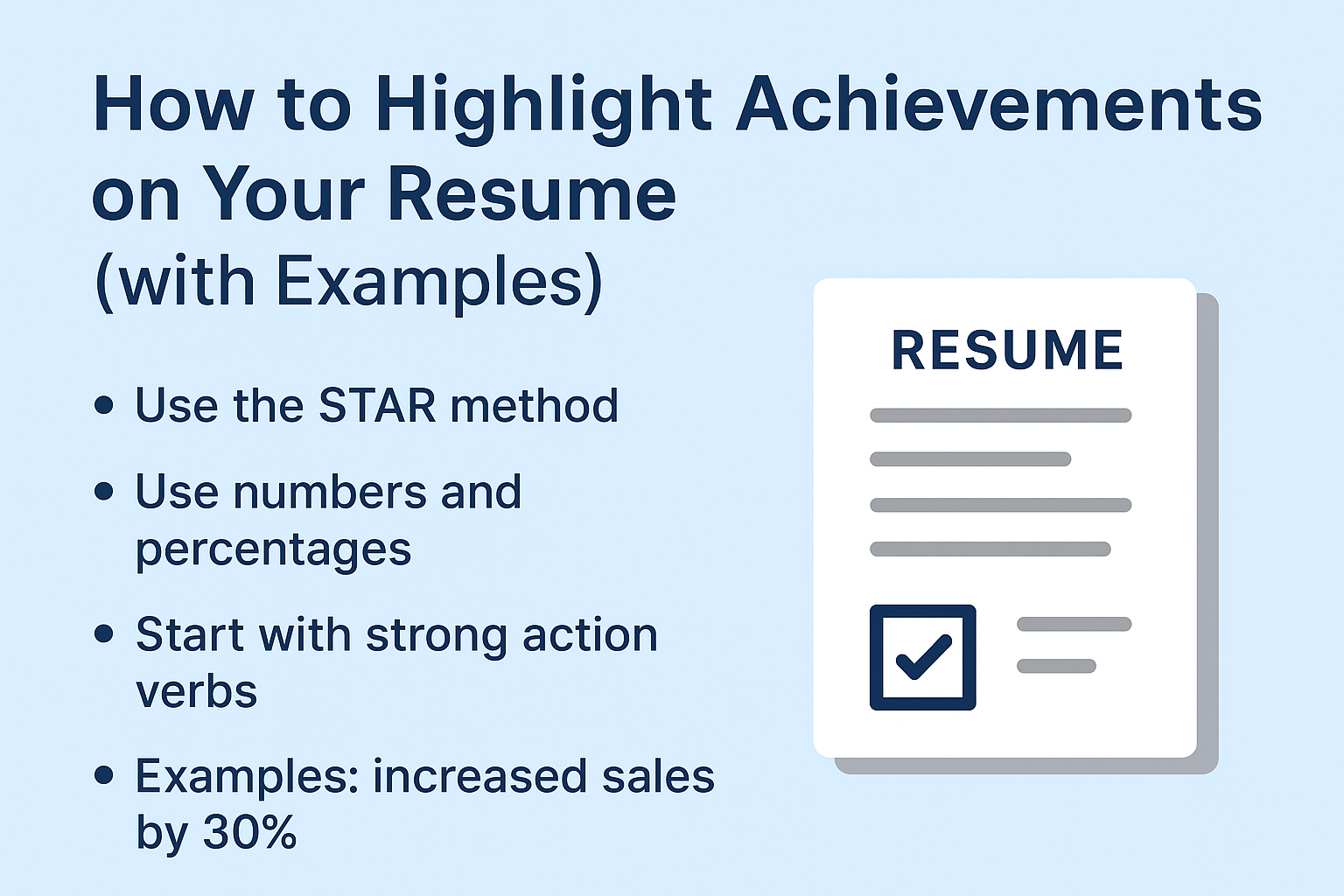How to Highlight Achievements on Your Resume (with Examples)
Many job seekers make the mistake of treating resumes like job descriptions, simply listing duties instead of showcasing impact. Recruiters don’t just want to know what you did; they want to see how well you did it. To highlight achievements is the most powerful way to differentiate yourself from other applicants.
This guide will show you how to write achievement-driven bullet points, backed with examples you can adapt to your resume.

1. Why Achievements Matter More Than Duties
Imagine two resumes:
- Duties-Based: “Responsible for managing a sales team.”
- Achievements-Based: “Led a sales team of 10 and boosted revenue by 25% in one year.”
Which one sounds more impressive? The second, of course. Employers want evidence that you can deliver results, not just perform tasks.
2. Use the STAR Method
The STAR method (Situation, Task, Action, Result) helps structure achievement-driven bullet points.
- Situation/Task: What challenge or responsibility did you face?
- Action: What did you do?
- Result: What was the outcome (preferably measurable)?
Example:
- Situation: Sales were declining.
- Action: Launched a new email marketing campaign.
- Result: Increased customer engagement by 40% and revenue by $50,000 in six months.
Resume Bullet: “Launched targeted email campaigns that boosted engagement by 40% and generated $50K in new revenue within six months.”
3. Use Numbers and Percentages
Quantifying results makes achievements concrete. Use:
- Percentages → “Reduced costs by 15%”
- Money → “Saved company $100,000 annually”
- Time → “Cut project delivery time from 6 months to 4 months”
- Volume → “Managed 500+ customer inquiries monthly”
4. Start with Strong Action Verbs
Each bullet point should start with a powerful verb, not “Responsible for.”
Examples:
- Achieved, Delivered, Improved, Increased, Optimized
- Led, Directed, Managed, Coordinated
- Built, Developed, Launched, Designed
Weak: “Responsible for customer support.”
Strong: “Resolved 95% of customer complaints within 24 hours, improving satisfaction scores by 20%.”
5. Examples of Achievement-Focused Resume Bullets
Customer Service:
- “Improved customer satisfaction rating from 75% to 92% by streamlining response procedures.”
Sales & Marketing:
- “Exceeded quarterly sales targets by 30%, generating $250K in additional revenue.”
Administration:
- “Implemented a new filing system that reduced document retrieval time by 50%.”
IT/Tech:
- “Developed automation scripts that cut manual reporting time by 10 hours per week.”
Logistics:
- “Reduced delivery delays by 25% through optimized dispatch scheduling.”
6. Tailoring Achievements to the Job Description
Recruiters want to see relevance.
- Look at the keywords in the job posting.
- Match your achievements to the skills and results they’re looking for.
- For example, if the posting emphasizes “cost reduction,” highlight achievements that saved money.
7. Balance Achievements Across Roles
Not every job will have “big wins,” but you can still show results:
- For internships → focus on learning impact or team contribution.
- For junior roles → highlight efficiency, accuracy, or teamwork improvements.
- For senior roles → emphasize leadership, revenue growth, and strategic impact.
Final Thoughts
Your resume is not a list of tasks; it’s a showcase of results. By using action verbs, quantifiable data, and the STAR method, you’ll transform boring job descriptions into powerful achievements that impress recruiters.
Remember: every bullet point should answer the question, “Why should we hire you over someone else?”
When recruiters see evidence of success, whether it’s boosting sales, improving processes, or saving time, they’ll know you can bring real value to their company.
